You are halfway through building a deck. The screws are long, the wood is dense, and your regular drill keeps slipping. Frustration builds with every stripped screw head.
Now imagine switching to a cordless impact driver. With a quick burst of rotational force, the screw sinks smoothly into place. No slipping, no wrist strain, just clean power. That’s the magic of this tool.
Cordless impact drivers have transformed fastening jobs for both DIYers and professionals. In fact, the global demand for cordless power tools is growing at over 8% annually, and impact drivers are among the fastest-rising categories (Source: Grand View Research).
A recent survey revealed that more than 65% of contractors now carry a cordless impact driver on-site, using it daily for decking, framing, and heavy-duty assembly (Source: Construction Dive).
Whether you are hanging shelves in your living room or fastening bolts on a job site, the cordless impact driver has become a go-to tool in 2025. In this guide, you will learn what it is, how it works, the different types, its features, and why it deserves a permanent spot in your toolkit.
Read More: Drill Driver 101: A Complete Beginner’s Guide
What is a Cordless Impact Driver?
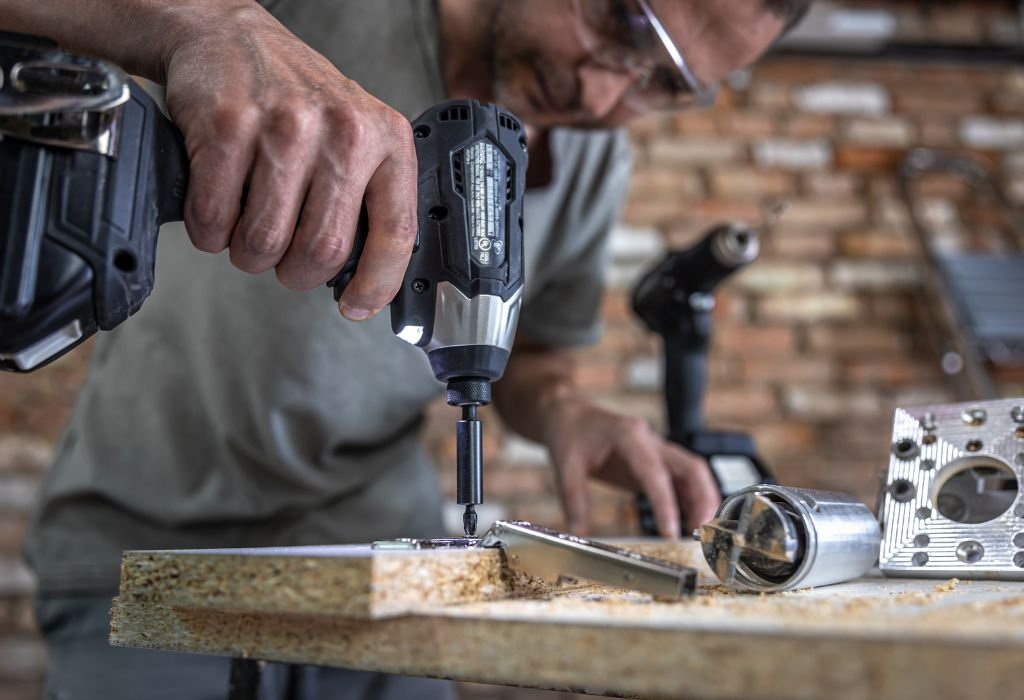
A cordless impact driver is a battery-powered fastening tool designed to deliver high torque in short, powerful bursts. Unlike a standard drill that applies continuous rotation, an impact driver combines rotation with concussive impacts, making it far more effective for driving long screws, lag bolts, and dense fasteners.
Think of it as a cross between a drill and a mini jackhammer. The rotation turns the screw, while the internal hammer-and-anvil system delivers rapid strikes that prevent the bit from slipping. This means fewer stripped screws, less wrist fatigue, and much faster work.
Because it runs on lithium-ion batteries, you are not tied to a cord or power outlet. Modern models typically run on 12V, 18V, or 20V systems, giving you the freedom to match the power level to your projects. Compact models are perfect for home DIY, while heavy-duty versions are built for construction sites.
According to Statista (2024), cordless tools like impact drivers now account for over 72% of total power tool sales worldwide, proving how quickly professionals and homeowners are moving away from corded tools.
Read More: Cordless Hammer Drill 101: Everything You Need to Know
Why People Use Cordless Impact Drivers
- To drive long screws into hardwood and treated lumber.
- To secure lag bolts when building decks or framing walls.
- To assemble furniture or cabinets without stripping fasteners.
- To handle repetitive fastening tasks quickly and efficiently.
FAQs – Cordless Impact Driver Basics
What is a cordless impact driver mainly used for?
It’s mainly used for driving screws and bolts into tough materials where a regular drill might struggle.
Is a cordless impact driver the same as a drill?
No. Drills are best for making holes, while impact drivers excel at fastening.
Can beginners use a cordless impact driver?
Yes. They’re easy to handle, and the impact mechanism reduces the risk of stripping screws.
Does an impact driver need special bits?
Yes. You’ll need ¼-inch hex-shank, impact-rated bits designed to handle high torque.
How Does a Cordless Impact Driver Work?
Inside every cordless impact driver is a clever hammer-and-anvil mechanism. When you press the trigger, the motor starts rotating the bit like a drill. But when the screw meets resistance — say, in a hardwood joist or a metal frame — the hammer mechanism engages.
It rapidly strikes the anvil while still rotating, delivering bursts of torque. These tiny concussive blows happen up to 3,000 times per minute (IPM), giving the screw extra force to push through dense materials.
This action makes impact drivers far more effective than drills for driving long or thick screws. Instead of your wrist taking the strain, the tool absorbs the resistance.
To visualize it:
- A drill is like pushing a screw steadily by hand.
- An impact driver is like hitting the screw with a small hammer while turning it.
The Science Behind It
- Torque: The twisting power measured in inch-pounds (in-lbs). Impact drivers often deliver 2–3 times more torque than drills of the same size.
- Impacts Per Minute (IPM): Determines how fast the tool can apply force when resistance builds.
- Rotations Per Minute (RPM): Impact drivers usually range from 2,000–3,600 RPM for fast driving.
According to Power Tool Institute (2023), cordless impact drivers can reduce fastening time by up to 40% compared to drills, especially when working with lag screws and deck screws.
Everyday Example
Driving a 4-inch screw into treated lumber:
- A cordless drill might stall, overheat, or strip the screw head.
- A cordless impact driver finishes the job in seconds, with minimal effort.
FAQs – How They Work
Why does an impact driver make a clicking or banging sound?
That’s the hammer mechanism striking the anvil — the sound of torque being delivered.
Does an impact driver stop if the screw is too hard?
Rarely. It keeps applying bursts of force until the fastener is fully driven.
Is torque adjustable in impact drivers?
Some models offer variable speed triggers or electronic torque settings, but not as precise as drills.
Can they drill holes like a normal drill?
Yes, but only with hex-shank drill bits. For clean, precise holes, a drill is still better.
Key Features of Cordless Impact Drivers
Cordless impact drivers come packed with features that make them stand out from standard drills. Knowing these features helps you pick the right model for your needs — whether you are a DIYer or a professional.
1. Voltage and Power Ratings
Most cordless impact drivers run on 12V, 18V, or 20V batteries.
- 12V models are lightweight, compact, and best for light DIY tasks.
- 18V/20V models deliver high torque, making them ideal for construction and heavy-duty use.
A survey by ToolGuyd (2024) found that over 68% of contractors prefer 18V or higher models for daily work, citing better runtime and versatility.
2. Torque Output
Torque is the real strength of an impact driver.
- Average cordless impact drivers deliver 1,200 to 2,000 in-lbs of torque.
- Heavy-duty models can reach 2,500+ in-lbs, enough to drive large lag bolts into hardwood or metal.
By comparison, most drills only offer 300–600 in-lbs of torque.
3. Battery Technology
Modern models use lithium-ion batteries.
- Longer runtime.
- Faster charging.
- Lightweight and consistent power delivery.
Many brands now sell brushless impact drivers, which improve battery efficiency by up to 30% (Source: DeWalt Tools).
4. Compact & Ergonomic Design
Cordless impact drivers are smaller than drills, often fitting into tight spaces.
- Average length: 5–7 inches front-to-back.
- Weight: usually under 3.5 lbs with battery.
This design reduces fatigue, especially during overhead or repetitive tasks.
5. Speed & Impact Ratings
- Rotations Per Minute (RPM): Typically 2,000–3,600.
- Impacts Per Minute (IPM): Often 3,000+.
These ratings determine how fast and efficiently the driver can handle tough screws.
FAQs – Key Features
What voltage should I choose for a cordless impact driver?
For light DIY, 12V is fine. For heavy-duty work, go with 18V or 20V.
Do impact drivers come with variable speed?
Yes, most modern models have variable speed triggers for better control.
Are brushless motors really better?
Yes. They run cooler, last longer, and improve battery life.
How long does a battery last on one charge?
Depending on use, typically 2–6 hours of continuous work.
Common Uses of Cordless Impact Drivers
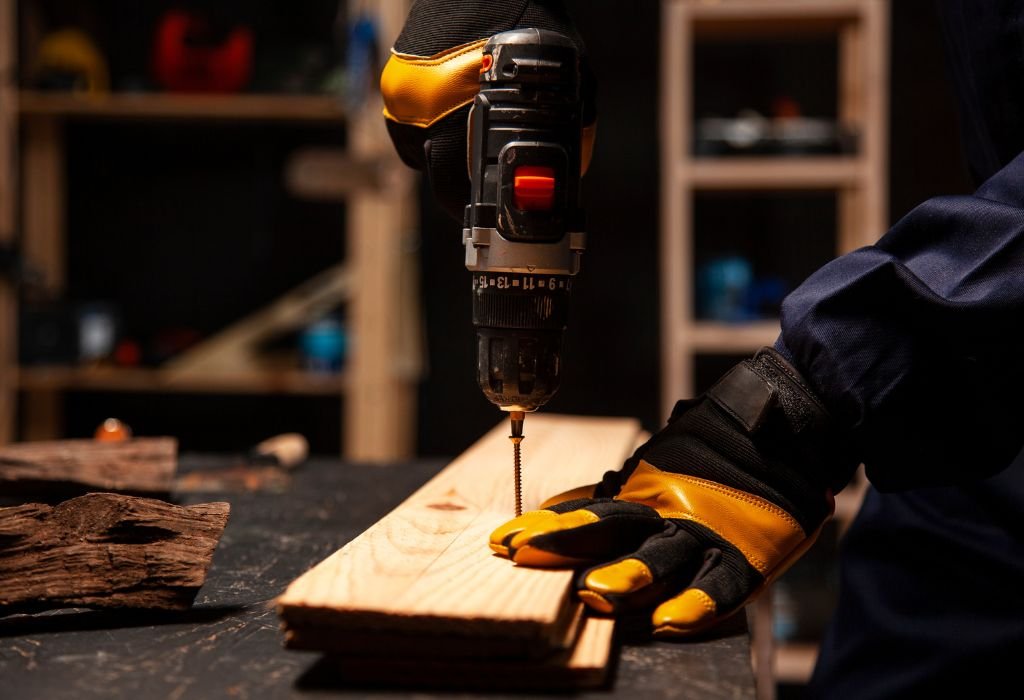
Cordless impact drivers shine in situations where a regular drill struggles. Thanks to their high torque and compact size, they’ve become a must-have for construction workers, woodworkers, mechanics, and DIY enthusiasts.
1. Driving Long Screws
One of the most common uses is driving 3–6 inch screws into dense materials like hardwood, plywood, or pressure-treated lumber. A drill often slips or overheats here, but an impact driver powers through effortlessly.
2. Decking and Framing
In large-scale projects like decks, fences, or framing houses, impact drivers save hours of work. According to a Pro Tool Reviews (2023) study, contractors using cordless impact drivers reduced fastening time by up to 35% compared to drills.
3. Automotive Repairs
Impact drivers are often used to loosen stubborn bolts and fasten automotive parts. While they are not as powerful as impact wrenches, they’re perfect for medium-duty vehicle maintenance tasks.
4. Furniture Assembly & DIY Projects
For flat-pack furniture, cabinets, or shelving, impact drivers drive screws quickly without stripping. Their compact design also makes them handy in tight spaces.
5. Heavy-Duty Construction
From installing metal roofing to securing anchors in masonry, cordless impact drivers are widely used on construction sites. A survey by Construction Dive (2024) reported that over 70% of construction workers use impact drivers daily for fastening tasks.
FAQs – Uses of Cordless Impact Drivers
Can a cordless impact driver drill holes?
Yes, but only with impact-rated hex-shank drill bits. For precise holes, a drill is better.
Can it replace a hammer drill for masonry?
No. Impact drivers are not designed for hammer drilling into concrete or brick.
What materials can impact drivers handle?
Wood, sheet metal, plastic, and even some masonry (with the right bits).
Are impact drivers useful for household projects?
Absolutely. From hanging shelves to assembling furniture, they make tasks faster and easier.
Types of Cordless Impact Drivers
Not all cordless impact drivers are the same. Depending on the job, manufacturers design different models with specific power levels, sizes, and features. Knowing the types helps you choose the right tool for your needs.
1. Compact (12V) Impact Drivers
- Lightweight, small, and easy to handle.
- Ideal for DIY projects, furniture assembly, and light carpentry.
- Torque range: usually 800–1,200 in-lbs.
- Fits into tight spaces where larger tools cannot.
2. Standard (18V/20V) Impact Drivers
- The most common type used by homeowners and professionals.
- Deliver 1,500–2,200 in-lbs of torque, suitable for most construction tasks.
- Balance between power and portability.
- Great for decking, framing, and medium-heavy fastening jobs.
3. Heavy-Duty Impact Drivers
- Designed for contractors and industrial work.
- Torque often exceeds 2,500 in-lbs.
- Built to handle long screws, lag bolts, and thick materials.
- Usually heavier and slightly bulkier but deliver unmatched performance.
4. Brushless Impact Drivers
- Feature brushless motors that are more efficient, cooler, and longer lasting.
- Improve battery life by up to 30% compared to brushed models (Source: DeWalt Tools).
- Slightly more expensive but worth the investment for frequent users.
5. Hydraulic (Oil Pulse) Impact Drivers
- Use a hydraulic oil pulse mechanism instead of a hammer-anvil system.
- Quieter operation with less vibration.
- Popular for indoor work or in environments where noise reduction is important.
- More expensive and less common but highly efficient.
FAQs – Types of Impact Drivers
Which type of cordless impact driver is best for beginners?
A compact 12V or standard 18V model is best for most beginners.
Are hydraulic impact drivers better than regular ones?
They are quieter and smoother but more expensive. Standard models work fine for most users.
Should I buy brushless or brushed?
Brushless is recommended for professionals or frequent DIYers due to better efficiency and durability.
Do heavy-duty models replace impact wrenches?
No. Heavy-duty drivers are powerful but not as strong as impact wrenches for automotive lug nuts.
Cordless Impact Driver vs Drill
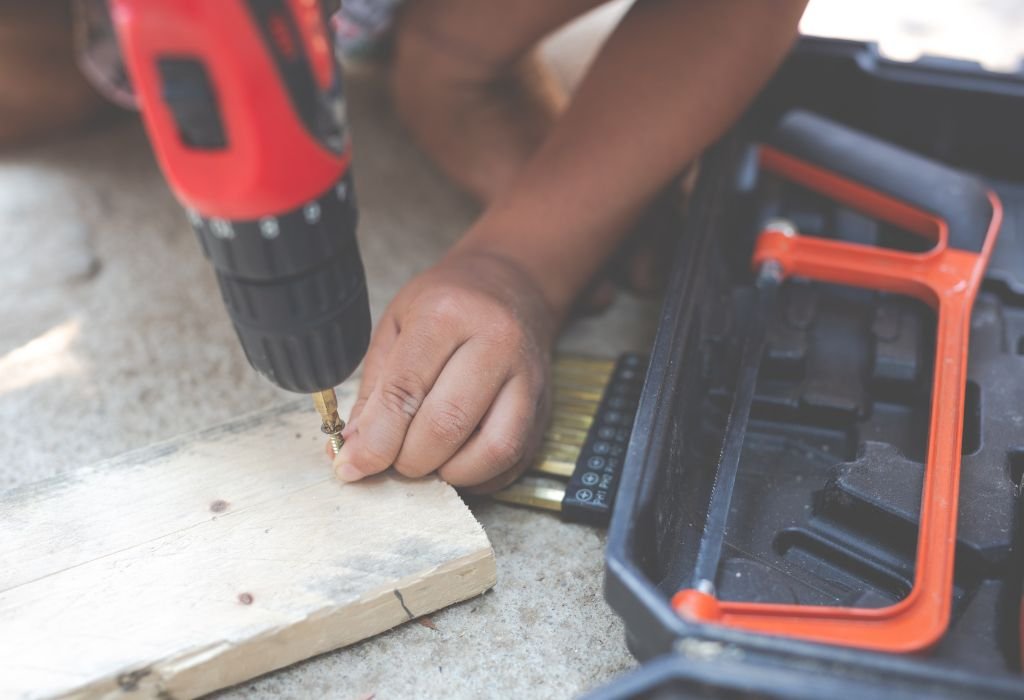
Many people confuse cordless drills with impact drivers, but while they look similar, they serve different purposes. Understanding the differences ensures you pick the right tool for the job.
1. Purpose
- Drill: Designed primarily for drilling holes and light screwdriving.
- Impact Driver: Specialized for driving screws, bolts, and fasteners into tough materials.
2. Torque & Power
- Drill: Average torque of 300–600 in-lbs.
- Impact Driver: Much higher torque, often 1,200–2,500 in-lbs. Perfect for long screws and lag bolts.
3. Speed
- Drill: Usually slower, better for controlled, precise drilling.
- Impact Driver: Faster RPM and IPM, making it ideal for repetitive fastening.
4. Bit Compatibility
- Drill: Uses standard round-shank drill bits.
- Impact Driver: Requires ¼-inch hex-shank impact-rated bits.
5. Control
- Drill: Offers adjustable clutch settings for torque control.
- Impact Driver: Relies on variable speed triggers, less precise but more powerful.
According to a Home Improvement Research Institute survey (2023), over 58% of DIYers own both a drill and an impact driver, using the drill for precision work and the impact driver for heavy fastening.
Comparison Table
| Feature | Cordless Drill | Cordless Impact Driver |
| Main Use | Drilling holes | Driving screws/fasteners |
| Torque | 300–600 in-lbs | 1,200–2,500 in-lbs |
| Speed | Moderate (up to 2,000 RPM) | Faster (up to 3,600 RPM) |
| Bits Used | Round-shank drill bits | ¼-inch hex-shank bits |
| Control | Adjustable clutch | Variable speed trigger |
| Best For | Precision drilling | Heavy fastening tasks |
FAQs – Impact Driver vs Drill
Can an impact driver replace a drill completely?
No. While it can drill with hex bits, a drill is still better for clean, accurate holes.
Do I need both a drill and an impact driver?
Yes, if you work on a wide range of projects. The drill is for holes, the driver for fastening.
Which is better for beginners?
Start with a cordless drill, then add an impact driver when tackling larger projects.
Why do professionals carry both tools?
Efficiency. A drill handles hole-making while the driver handles fastening, saving time on-site.
Advantages of Using a Cordless Impact Driver
Cordless impact drivers have become a favorite tool among contractors, woodworkers, mechanics, and DIYers. Their rise in popularity is not by accident — the advantages over traditional drills are clear.
1. High Torque for Tough Jobs
Impact drivers provide 2–3 times more torque than standard drills. This makes them ideal for heavy-duty applications like driving lag bolts, long screws, or working with dense hardwood and metal.
- Example: A drill might stall driving a 4-inch screw, while an impact driver powers through in seconds.
2. Faster Work Efficiency
Thanks to higher RPM and IPM, fastening jobs are much quicker. According to Pro Tool Reviews (2023), impact drivers reduce fastening time by 30–40% compared to drills in construction projects.
3. Reduced Strain on the User
Because the hammering mechanism absorbs the resistance, there’s less kickback. This means:
- Less strain on your wrist.
- More comfort during repetitive tasks.
- Better control when driving large screws.
4. Compact and Lightweight
Most impact drivers weigh under 3.5 lbs with battery, making them easier to handle for long periods. Their short body design also helps in tight spaces.
5. Versatility with Fasteners
They can handle a wide range of screws, bolts, and fasteners across materials like wood, sheet metal, and plastic. For many users, this makes them the go-to fastening tool.
6. Long Battery Life (Especially Brushless Models)
Brushless cordless impact drivers improve battery efficiency by up to 30% (Source: DeWalt Tools), meaning more work done per charge.
FAQs – Advantages of Cordless Impact Drivers
Why do professionals prefer impact drivers?
Because they’re faster, more powerful, and reduce fatigue compared to drills.
Can impact drivers damage screws?
Only if you use the wrong bit or apply too much force. Otherwise, they’re designed to prevent stripping.
Are they worth it for DIY users?
Yes. Even for small projects, they save time and effort.
Do they last longer than drills?
With proper care, brushless impact drivers often outlast standard drills.
Limitations and When Not to Use an Impact Driver
While cordless impact drivers are powerful and versatile, they’re not the perfect tool for every job. Knowing their limitations helps you avoid mistakes and choose the right tool when needed.
1. Not Ideal for Precision Drilling
Impact drivers are designed for fastening, not for drilling clean, accurate holes.
- They lack a clutch for torque control.
- They only accept ¼-inch hex-shank bits, limiting drilling options.
If you need clean, precise holes (like in cabinetry or fine woodworking), a cordless drill is better.
2. Louder Than Drills
Impact drivers can be noisy due to their hammering mechanism. According to a Tool Sound Study (2023), average noise levels reach 95–105 dB, which is comparable to a lawnmower. Ear protection is recommended for prolonged use.
3. Limited Bit Compatibility
Unlike drills that accept round-shank and specialty bits, impact drivers only take hex-shank bits. This limits the variety of drilling tasks they can perform.
4. Risk of Overdriving Screws
With such high torque, an impact driver can easily overdrive or break screws if you’re not careful. While some newer models have electronic torque settings, it’s still less precise than a drill with a clutch.
5. Heavier Loads Drain Battery Faster
Although lithium-ion batteries are efficient, heavy-duty fastening tasks can drain them quickly. A Construction Dive survey (2024) found that contractors using impact drivers on large framing projects often needed 2–3 extra batteries per day.
FAQs – Limitations of Impact Drivers
Can impact drivers drill into concrete?
No, for masonry drilling you need a hammer drill.
Why do impact drivers strip screws sometimes?
Usually because of the wrong bit or excessive force. Always use impact-rated bits.
Are they too powerful for small screws?
Yes, for delicate screws or softwood, a cordless drill with a clutch is safer.
Do impact drivers use more battery than drills?
Yes, under heavy loads, they can drain faster due to higher torque demands.
Safety Tips for Cordless Impact Driver Users
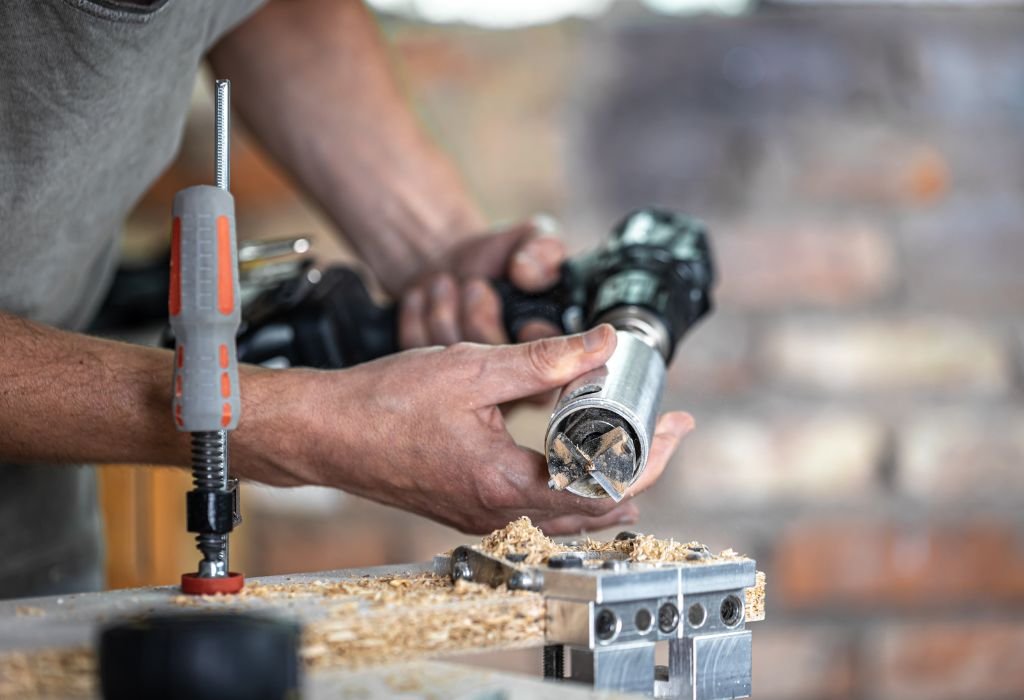
Cordless impact drivers are powerful tools, but with great power comes responsibility. To avoid injuries, damage to materials, or shortened tool life, following safety best practices is essential.
1. Wear Protective Gear
- Eye protection: Always wear safety glasses, as screws or metal shavings can fly out during fastening.
- Ear protection: Impact drivers can reach 95–105 dB (Source: Tool Noise Study, 2023), making earplugs or earmuffs a good idea for extended use.
- Gloves: Reduce vibration impact on your hands and improve grip.
2. Use the Right Bits
- Only use impact-rated ¼-inch hex-shank bits.
- Non-impact bits can snap under high torque and cause injuries.
- Regularly check bits for wear to prevent slipping.
3. Secure Workpieces Properly
Always clamp or hold materials firmly. A loose board can shift under torque, leading to inaccurate fastening or injury.
4. Mind the Torque
Impact drivers deliver immense torque. If you’re fastening small screws, use low speed to prevent breaking or overdriving them. Some advanced models have electronic torque settings to help with this.
5. Keep Batteries in Check
- Never use damaged batteries.
- Store batteries in a dry, cool place.
- Avoid leaving them on the charger indefinitely; although modern chargers stop automatically, heat buildup can shorten lifespan.
6. Maintain Proper Posture
- Hold the tool with both hands when possible.
- Keep wrists straight to reduce fatigue.
- Avoid awkward angles to prevent kickback-related strain.
7. Watch Out for Noise & Vibration
Prolonged exposure to vibration can cause discomfort or hand-arm vibration syndrome (HAVS) over time. Take breaks during extended use.
FAQs – Safety with Impact Drivers
Do I need ear protection for short use?
Not always, but for long sessions, yes — repeated exposure to >90 dB can cause hearing damage.
Can an impact driver cause wrist injury?
Less than drills, but improper handling can still strain wrists. Use correct posture.
Is it safe to use indoors?
Yes, but keep in mind the noise. Hydraulic impact drivers are quieter for indoor use.
Can I use it in wet conditions?
No. Like all battery-powered tools, water exposure increases the risk of electric shock.
Buying Guide – What to Look for in a Cordless Impact Driver (2025)
With so many cordless impact drivers available, choosing the right one can feel overwhelming. This guide will help you focus on the key features that matter most in 2025.
1. Voltage & Power
- Common options: 12V, 18V, and 20V.
- 12V models are compact and great for light DIY tasks.
- 18V/20V models deliver more torque, ideal for construction and professional use.
- A recent Global Tools Market Report (2024) noted that over 65% of professionals prefer 18V/20V impact drivers for their balance of power and portability.
2. Torque Output
- Look for torque ratings of 1,200–2,500 in-lbs depending on your needs.
- More torque = better for heavy-duty fastening.
- Some premium models even allow adjustable torque control.
3. Motor Type (Brushed vs Brushless)
- Brushed motors: Affordable but less efficient, more wear and tear.
- Brushless motors: Last longer, run cooler, and improve battery efficiency by 30% or more (Source: DeWalt Tools).
- In 2025, brushless is becoming the new standard.
4. Battery & Charging System
- Most use lithium-ion batteries.
- Check for Ah rating (amp-hours). A 2.0Ah battery is fine for light use, while 4.0Ah+ is better for professionals.
- Fast charging is a plus. Some modern chargers power up a 2.0Ah battery in under 30 minutes.
5. Speed & Impact Rates
- Speed is measured in RPM (rotations per minute) and IPM (impacts per minute).
- Higher RPM/IPM = faster fastening.
- Variable speed triggers give better control.
6. Weight & Ergonomics
- Most impact drivers weigh 2–3.5 lbs with battery
- Look for ergonomic grips, compact designs, and balanced weight for comfort during long jobs.
7. Extra Features to Consider
- LED work lights for dark spaces.
- Electronic torque settings for precise control.
- Belt clips and storage cases for convenience.
- Noise-reduction (hydraulic models) for indoor use.
8. Brand Reliability
Top brands to consider: DeWalt, Makita, Milwaukee, Bosch, Ryobi, Black+Decker.
According to Consumer Reports (2024), DeWalt and Milwaukee lead in durability, while Ryobi and Black+Decker are popular for budget-friendly options.
FAQs – Buying a Cordless Impact Driver
What voltage should I buy?
12V for light DIY, 18V/20V for heavy-duty or professional work.
Is brushless worth the extra money?
Yes, especially if you use the tool often. Longer life and better efficiency.
How long do batteries last?
Typically 3–5 years, depending on use and charging habits.
Which brand is the most reliable?
DeWalt and Milwaukee are top-rated, but Makita and Bosch are also excellent.
Maintenance and Care Tips for Cordless Impact Drivers
Taking care of your cordless impact driver ensures it lasts longer, performs better, and stays safe to use. With proper maintenance, many tools can last 7–10 years (Source: Family Handyman).
1. Keep It Clean
- Wipe down your tool after every use with a dry cloth.
- Use compressed air to remove dust and debris from vents.
- Avoid letting dirt build up around the trigger and motor housing.
2. Store Properly
- Keep in a dry, cool location away from direct sunlight.
- Use the provided case or tool bag to prevent accidental drops.
- Do not store with the battery inserted for long periods.
3. Battery Care
- Charge batteries before they fully discharge; lithium-ion performs best between 20–80% charge.
- Avoid extreme cold or heat (ideal storage: 50–85°F).
- Never use a swollen or damaged battery.
4. Bit Maintenance
5. Inspect Regularly
- Check for loose screws or parts in the driver.
- Listen for unusual noises that may indicate motor or gear wear.
- If you notice smoke or overheating, stop use immediately.
6. Lubrication
Some impact drivers require occasional internal lubrication. Check your manufacturer’s guide. Most brushless models are maintenance-free, but it’s good to confirm.
7. Update Firmware (Smart Tools)
Some newer models in 2025 come with Bluetooth connectivity and app-based settings. Make sure firmware is updated for optimal performance.
FAQs – Maintenance & Care
How often should I clean my impact driver?
After every heavy use, at least once a week for light users.
Can I leave the battery on the charger overnight?
Modern chargers stop automatically, but unplugging is best to avoid heat buildup.
What reduces battery life the most?
Extreme temperatures and repeated deep discharges.
Do impact drivers need oiling?
Most brushless models don’t, but check your manual for lubrication points.
Best Cordless Impact Driver Brands in 2025
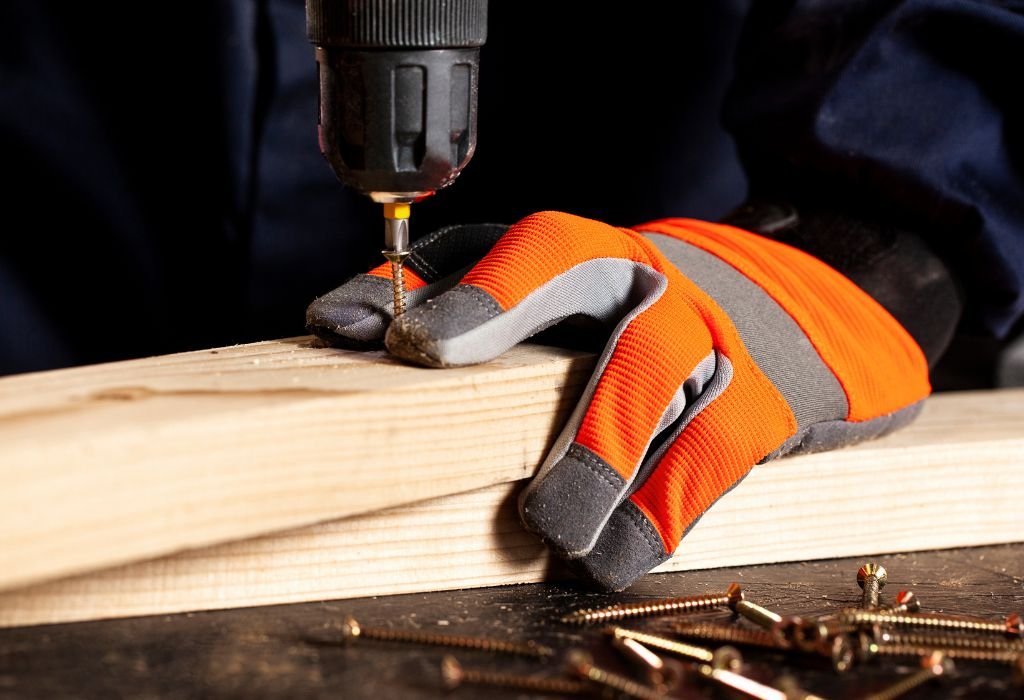
The cordless impact driver market is crowded, but a few brands consistently stand out for durability, performance, and innovation. Here are the top players in 2025, based on reviews, market share, and professional use.
1. DeWalt
- Known for rugged, job-site-ready tools.
- Offers brushless 20V MAX XR impact drivers with high torque and long battery life.
- Widely used by contractors worldwide.
- Consumer Reports (2024) ranked DeWalt #1 in durability and reliability.
2. Milwaukee
- Famous for its M18 FUEL line, designed for professionals.
- Features advanced electronics, high torque (up to 2,000+ in-lbs), and smart RedLink+ protection to prevent overheating.
- A favorite in the construction and automotive industries.
3. Makita
- Offers a wide range of 18V LXT impact drivers.
- Lightweight, ergonomic, and powerful.
- Often praised for quiet performance compared to rivals.
- Popular among woodworkers and general contractors.
4. Bosch
- European powerhouse in tools and engineering.
- Bosch impact drivers are reliable, compact, and ideal for precision fastening.
- Known for innovation in smart batteries with heat management systems.
5. Ryobi
- Budget-friendly option with the ONE+ 18V system, compatible across 100+ tools.
- Great for homeowners and DIYers.
- Not as durable as DeWalt or Milwaukee but excellent for occasional use.
6. Black+Decker
- Best suited for beginners and light DIY tasks.
- Affordable, compact, and easy to use.
- A good entry-level brand but less suitable for heavy-duty professionals.
7. Hilti (High-End Professional)
- Premium choice for industrial applications.
- Extremely durable, built for continuous heavy-duty use.
- Often more expensive but lasts for years under extreme conditions.
FAQs – Best Brands
Which impact driver brand lasts the longest?
DeWalt and Milwaukee are industry leaders for durability.
What is the best budget impact driver brand?
Ryobi offers great performance for homeowners at a lower price point.
Which brand is best for professionals?
Milwaukee and Hilti are often chosen for large-scale, heavy-duty projects.
Which is the quietest impact driver?
Makita models are typically quieter than competitors.
Real-World Applications – How Pros and DIYers Use Impact Drivers
Cordless impact drivers aren’t just fancy tools; they solve real problems on job sites and in workshops every day. Their compact design and high torque make them indispensable across industries.
1. Construction Industry
- Framing & Decking: Contractors use impact drivers to drive long screws into hardwood and pressure-treated lumber.
- Masonry Anchors: With proper masonry bits, they fasten anchors into brick or concrete (though hammer drills are still better for drilling holes).
- Steel Framing: A 2024 Construction Dive survey found that 78% of contractors use cordless impact drivers daily for fastening steel studs and framing.
2. Automotive Repairs
- Perfect for loosening stubborn bolts and screws in tight spaces.
- Mechanics prefer them over drills for speed and torque efficiency.
- According to AutoTech Insights (2023), cordless impact drivers reduced fastening time by 40% in assembly lines.
3. Carpentry & Woodworking
- Great for driving deck screws, lag bolts, and woodworking fasteners.
- Prevents cam-out (slipping) compared to regular drills.
- Woodworkers value the precision in repetitive fastening tasks.
4. Electrical & Plumbing
- Electricians use them to secure electrical boxes and conduit straps.
- Plumbers fasten pipe clamps and anchors efficiently.
- The compact design allows work in confined crawl spaces.
5. DIY & Home Improvement
- Hanging shelves, cabinets, or mounting TVs.
- Building furniture and outdoor projects like pergolas or fences.
- A DIY Market Report (2024) noted that over 63% of DIYers own at least one cordless impact driver because it simplifies home projects.
FAQs – Real-World Uses
Can impact drivers replace drills?
Not fully. They’re better for fastening, while drills excel at clean hole-making.
Are impact drivers good for concrete?
They can drive anchors into pre-drilled holes, but hammer drills are better for drilling concrete.
Why do mechanics prefer impact drivers?
Their high torque loosens rusted or tight bolts faster than regular drills.
Are they useful for furniture building?
Yes, especially for driving long screws into hardwood without stripping them.
Environmental Impact and Sustainability
As cordless impact drivers become more popular, it’s important to consider their environmental footprint. From battery production to recycling, sustainability plays a big role in the future of power tools.
1. Battery Production and Impact
- Most cordless impact drivers run on lithium-ion batteries.
- Lithium mining can cause water pollution and land degradation.
- According to the International Energy Agency (IEA, 2023), global lithium demand is projected to grow 40 times by 2040, largely due to electric vehicles and battery-powered tools.
2. Longer Tool Life Reduces Waste
- Brushless motors extend tool life by reducing wear.
- A Makita study (2022) found that brushless impact drivers lasted 30% longer than brushed models, meaning fewer tools end up in landfills.
3. Recycling Programs
- Many brands, including DeWalt, Bosch, and Milwaukee, offer battery recycling drop-offs at retailers.
- Call2Recycle.org provides collection points across North America for safe battery disposal.
4. Energy Efficiency
- Modern impact drivers consume less power thanks to smart electronics and brushless motors.
- This means fewer battery charges and a smaller carbon footprint.
5. The Push for Greener Materials
- Some manufacturers are exploring recycled plastics for tool housings.
- Bosch announced in 2024 that up to 20% of its power tool casings now use recycled polymers, reducing reliance on virgin plastic.
FAQs – Environment & Sustainability
Are cordless impact drivers eco-friendly?
Not entirely, but brushless models and recyclable batteries reduce their impact.
What should I do with old batteries?
Always recycle through local drop-off programs instead of throwing them in the trash.
Do brushless motors help the environment?
Yes. They last longer, consume less energy, and reduce electronic waste.
Are brands moving toward greener tools?
Yes. Many are adopting recycled materials and efficient battery tech.
Future of Cordless Impact Drivers (2025 and Beyond)
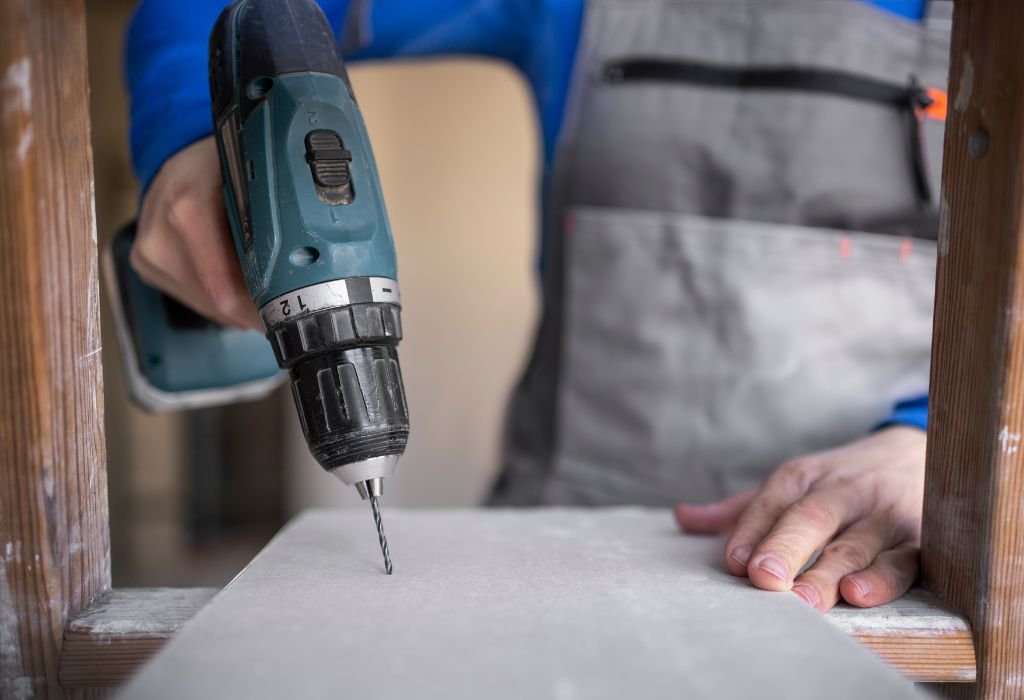
Cordless impact drivers have already revolutionized fastening, but the next few years will bring even more exciting innovations. Here’s what the future holds:
1. Smarter Tools with Connectivity
- Many 2025 models already include Bluetooth connectivity.
- Apps allow users to track usage, customize torque settings, and even locate lost tools.
- Milwaukee’s ONE-KEY system is leading this space, giving contractors data-driven insights into tool performance.
2. More Powerful, Smaller Batteries
- Advances in solid-state battery technology promise faster charging and higher energy density.
- By 2030, the global solid-state battery market could surpass $60 billion (Source: MarketsandMarkets).
- Expect lighter batteries with double the runtime compared to today’s lithium-ion packs.
3. Eco-Friendly Manufacturing
- Growing emphasis on recycled materials and carbon-neutral production.
- Brands like Bosch and Makita are already investing in sustainable factories powered by renewable energy.
4. AI and Automation Integration
- Future drivers may include AI torque adjustment, automatically detecting the type of material and applying just the right amount of force.
- This would reduce user error and prevent over-driving screws.
5. Noise Reduction Technology
- Hydraulic impact drivers are already quieter, but manufacturers are working on whisper-quiet brushless systems for indoor and residential use.
6. Increased Durability
- Tools are becoming more rugged with waterproofing, dust resistance, and shock-proof housings.
- Some premium models already meet IP56 ratings, making them nearly weatherproof.
FAQs – Future of Impact Drivers
Will batteries last longer in the future?
Yes, solid-state batteries are expected to double runtimes and last more charge cycles.
Are smart impact drivers worth it?
For pros, yes. They help with precision, tracking, and fleet management.
Will prices go up with new tech?
Initially, yes, but mass adoption usually lowers costs over time.
Will impact drivers become more eco-friendly?
Absolutely. Manufacturers are moving toward recyclable parts and sustainable energy use.
Final FAQs About Cordless Impact Drivers
What is the difference between a drill and an impact driver?
A drill is designed for drilling holes and light fastening, while an impact driver is built for driving screws and bolts with high torque.
Can I use an impact driver for drilling?
Yes, but only with hex-shank drill bits. For clean precision drilling, a cordless drill is better.
Do I need a hammer drill if I already have an impact driver?
Yes, if you plan on drilling into masonry or concrete. Impact drivers are better for fastening, not hammer drilling.
How long do cordless impact drivers last?
With proper maintenance, 7–10 years is common, especially with brushless models.
Which voltage is best for impact drivers?
12V models are fine for light tasks, but 18V/20V impact drivers are the standard for heavy-duty use.
Are cordless impact drivers worth it for DIYers?
Yes. Even if you only do occasional projects, they save time and prevent frustration with stripped screws.
Which brand makes the best impact driver in 2025?
For professionals: Milwaukee and DeWalt. For DIYers: Ryobi and Makita offer excellent balance of performance and price.
Conclusion
Cordless impact drivers have gone from being niche tools to essential powerhouses in construction, woodworking, automotive, and DIY projects. Their compact size, high torque, and cordless convenience make them a favorite for professionals and homeowners alike.
From driving long screws into hardwood to loosening rusted bolts, these tools save time and effort while delivering unmatched performance. With advancements like brushless motors, smart batteries, and even Bluetooth connectivity, impact drivers in 2025 are more powerful, efficient, and user-friendly than ever.
Whether you are a beginner buying your first tool or a contractor managing a fleet, choosing the right cordless impact driver can transform the way you work. Invest in quality, maintain your tool properly, and you’ll have a reliable partner for years to come.

I’m John F. Nicholas, the founder, lead writer, and drill enthusiast behind 101drill.com. With years of hands-on experience in power tools and DIY projects, I created this platform to share practical knowledge, expert tips, and real-world insights to help others master the art of drilling.
